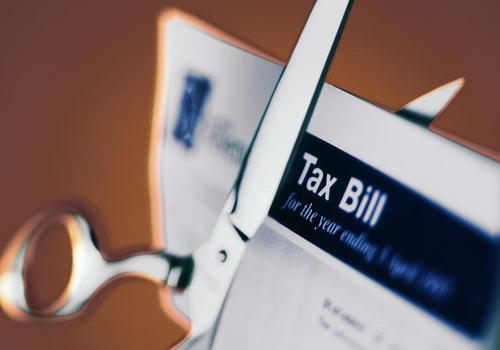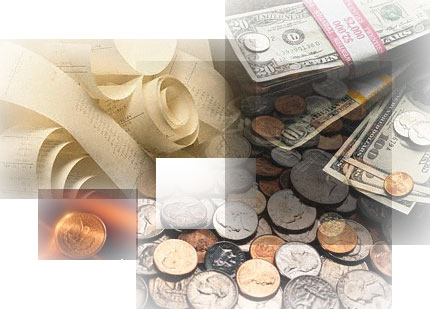RRSPs and Income Splitting

Income splitting is a tax strategy
whereby you transfer income to other family members who will be taxed less on
that income than you. The government generally doesn’t allow you to give income
(or income-earning assets) directly to a spouse: the normal result is that the
income is attributed back to your tax return. One of the few remaining ways for
those under age 65 to avoid these attribution rules is with a spousal RRSP.
You can contribute to an RRSP
belonging to your mate rather than your own; as long as all the money remains
in the plan for that year and the two following years, it all reverts to your
mate without attribution. So if you get 40 per cent tax deduction on a $10,000
RRSP contribution, for example, and your other half earns little or nothing, he
or she could withdraw the money two-plus years later and pay tax on it at less
than 25 per cent (depending on province). That’s a savings of more than $1,500.
The spousal RRSP has become a less
important retirement planning tool now that you’re allowed to freely split your
pension income (including RRIF and certain annuity income) with your spouse
after you reach 65. Nevertheless, it can be a good tax saving instrument prior
to that age, and a good means of building your partner’s own net worth.
Once you do reach age 65, of course,
you’d want to arrange your retirement incomes so that you’re both paying tax at
the same marginal rate, and also so that you can both claim the $2,000 annual
pension income credit on your tax returns. You can do this by converting some
of your RRSP savings into RRIFs (or annuities) at that time.
Investment Considerations
The $64,000 question is: what do you
do with the money you put into your RRSP (or RRIF, or TFSA, or unsheltered
investment account)? Do you invest in stock market, or stick with low-paying
but totally safe fixed-income investments like GICs or Canada savings Bonds
(CSBs)?
As far as stock markets go, the best
way to reduce your risk while maintaining the prospect of decent returns is to
adopt a long-term perspective and buy some of everything (within reason, of
course). Nobody can accurately predict where the markets will go on any given
days, so forget about timing the ups and downs and invest in the stock market
for the long term, buying different equity and fixed-income investments with
the intention of holding on to them.
Diversification is a cardinal tenet of
investment, so most retiree’ first choices will be mutual funds. Unless you’re
prepared for the complex, time consuming, and possibly expensive task of
managing your own investment portfolio, these funds, which are essentially
pools of numerous investors’ money, provide professional management as well as
diversification at relatively modest cost (in most cases).
A small retirement portfolio might
hold only a single balanced fund, or a fixed-income and an equity fund. Highly
risk-averse investors might stay away from equities entirely. It’s your choice:
can you sleep at night owning an equity fund when you know the stock markets
have been bouncing like crazy lately? Or can you live with that risk in order
to increase your earnings prospects? Over the long term, despite their
volatility, equity investments have always fared better on average than
fixed-income investments.
Of course, that’s little consolation
to those who in 2008 suffered through the worst stock market crash since 1929.
Only they themselves know whether they’re ready to get back into the stock
market saddle. Everyone has his or her own comfort zone of growth aspirations
versus safety, with the goal being to create a well balanced basket of selections
within that zone. That’s the essence of investment.
Fund Categoriesof Interest

Investment selection is a subject that
can fill many books and is far beyond the scope of this article, but the
following are a few types of funds that might be of particular interest to
retirees given current market conditions:
Fixed-income funds: Fixed-income funds should form the
bedrock of most retirees’ portfolios. They’re largely unaffected by stock
market gyrations and have historically provided better average returns than
GICs, term deposits, Canada Saving Bond (CSBs), and the like. Based on the
latest statistics from Fundata Inc., over the past 10 years, the average annual
compound return from the 100 plus funds in this category has been a relatively
steady five per cent (compared to current two or three per cent from most GICs
and TDs). And some fixed income funds have done far better.
Dividend income funds: Although these funds are equity-based
and some were hit almost a hard as other equities in 2008 and again in 2010,
they are nevertheless inherently more stable than most other equity funds
because of the consistent stream of dividend income they generate (many of the
companies in these portfolios are former income trusts, which were highly
popular with retirees until they were outlawed in 2011). Over the past 10
years, despite the broader markets’ ups and downs, these funds have averaged a
7.6 per cent return compounded annually, while Canadian equity funds overall
averaged 5.4 per cent. And again, some dividend funds have fared much better
than the averages.
Segregated funds: “Seg” funds are actually insurance
products comprising the investment component and an insurance component
covering market downturns. The result is an equity fund that guarantees you (or
your designated beneficiary) will always get back at least what you put into
the fund (or most of it segregated fund guarantees typically range from 75 to
100 per cent of your investment; some policies also have a reset feature
enabling you to lock in gains). There’s an added cost to any such guarantee,
though, so do the math and consider whether the risk reduction is worth the
premium.
“Normally when people get to the retirement phase, they
would start migrating their equities into fixed-income investments, but the
return from fixed-income investment has fallen,” Ablett says. “As a result,
there’ a lot more interest in Guaranteed Minimum Withdrawal Plans, a form of
seg fund that guarantees a fixed minimum monthly payment. If the markets do
better than expected, you get more than the guaranteed minimum.”
A few more pointers:
Although you have until the end of
February to make your 2011 RRSP contribution, you should actually try to put
money in the plan as soon as possible every year. That way you can maximize the
benefits of tax-free compounding.
If you turn 71 this year, you should
be thinking now about collapsing your RRSP(s) because you won’t be allowed to
own one next year. If you don’t roll the RRSP into a RRIF or qualifying (life
or term-to-90) annuity before year-end, you’ll have to pay tax on all its
contents.
“Usually people opt for a RRIF because
you can invest the same way as with an RRSP,” Ablett says. “But given current
market conditions, there’s a lot more interest in converting all or part of
their RRSPs into annuities instead. They get fixed payments for life [or until
age 90] and don’t need to worry about portfolio contents.”
Also, if you have both registered and
non-registered savings, you should give thought to which investment should be
held within the plan and which should remain unregistered. The general rule is
that, wherever practical without affecting your portfolio balance, you should
try to earn fully taxed interest within the plan, and preferentially taxed
dividends and capital gains outside the plan. That way you can reap the tax
breaks on dividends and gains inside an RRSP, these earnings will all be
treated as fully taxable income upon withdrawal.
And finally, if you do make an RRSP
contribution this month (or made one earlier for the 2011 tax year), when you
get your tax refund later this year, don’t waste it.
“A lot of people look forward to
getting that refund, but it’s not a good idea because what you’re doing is
lending the government your money tax-free for most of the year,” Strano sats.
“In true tax planning, your tax account balance should be zero at tax time,
including the refund. But it’s a psychological thing. People like it, so if
you’re going to get a refund of say $2,000, take $500 and blow it, but use the
other $1,500 to pay down the mortgage or other debt, or reinvest it.”
Diversification is a cardinal tenet
of investment, so most retirees’ first choices will be mutual funds.